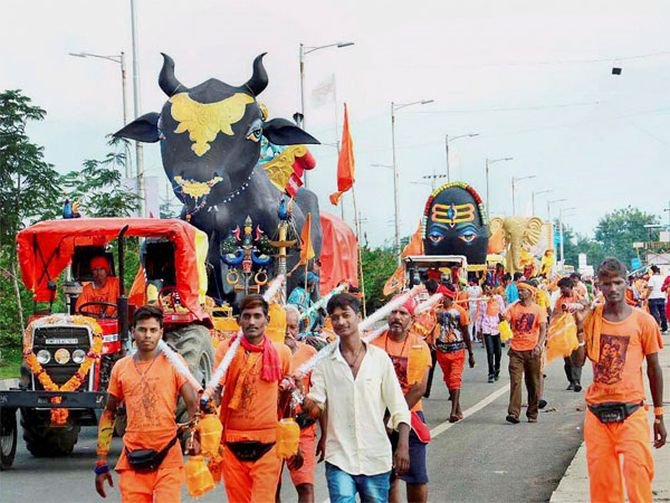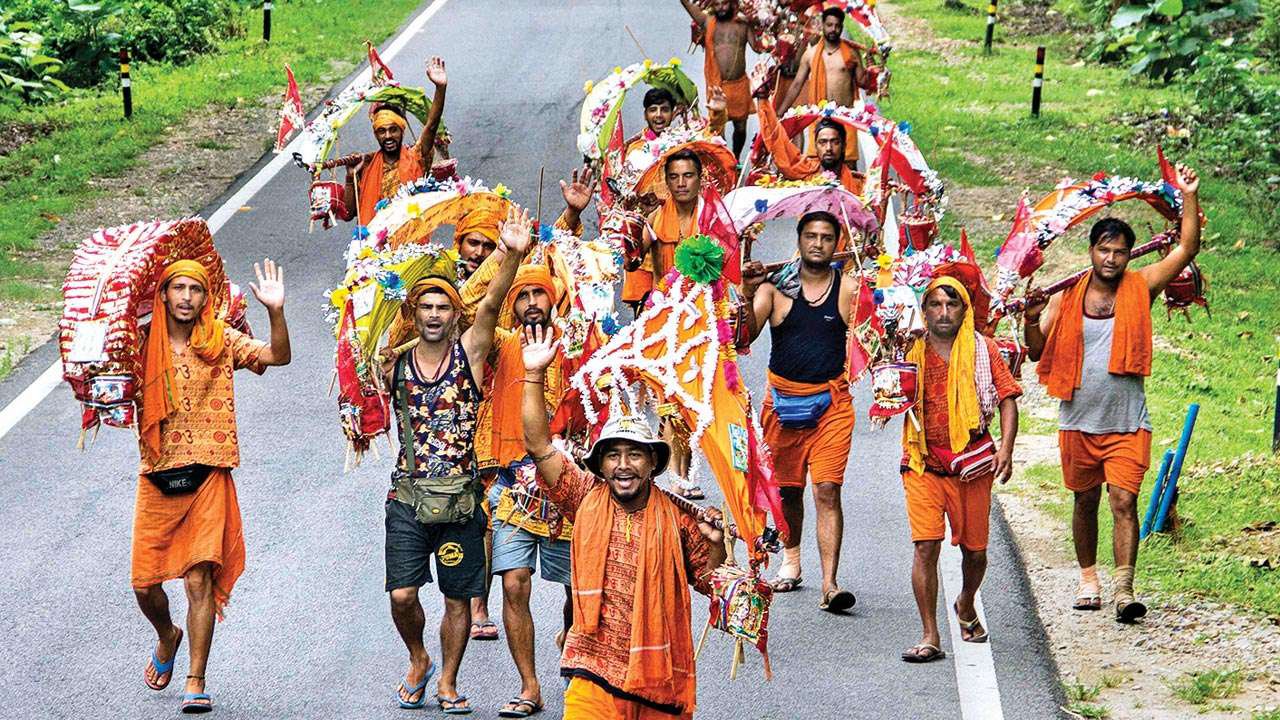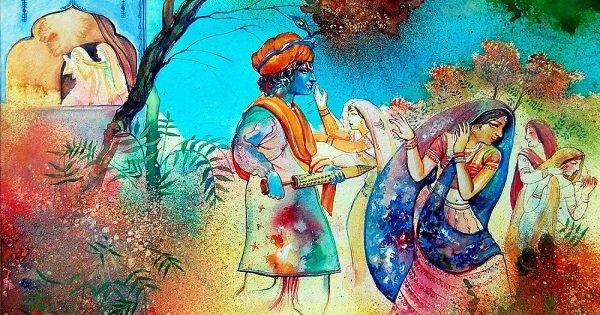In the Hindu religion, a kanwar is essentially a bamboo stick with pots holding water at both ends. It is never supposed to touch the ground, and can only be rested on special stands. The person who carries this rod is known as a kanwariya.

But why exactly do they make this vast and voluminous journey every year?
In case you’re not familiar with how Shiva’s throat turned blue in Hindu mythology, here’s a quick recap. During the churning of the oceans to find amrit, the poisonous halahala was also created. This substance was toxic for gods and asuras alike, so Shiva swallowed it and stored it in his throat.

Because of this, devotees of Lord Shiva carry Ganga water in the month of Sawan from Haridwar and offer it to their local Shiva shrines.
Once there, they pour the water on the Shiv Lingam. While a majority of the pilgrims are men, a few women also participate in the yatra. They mostly travel by foot, though many of them also use motorcycles, jeeps and trucks.

The kanwar yatra used to be a small affair undertaken by a few babas and older devotees. In the late 80s however, it gained popularity, becoming a massive movement today.
The sheer volume of people making this journey has led to some problems, as expected. Last year, a group of kanwariyas vandalised a car after it brushed past them. There have also been other instances of violence and hyper-nationalism by some kanwars.

















